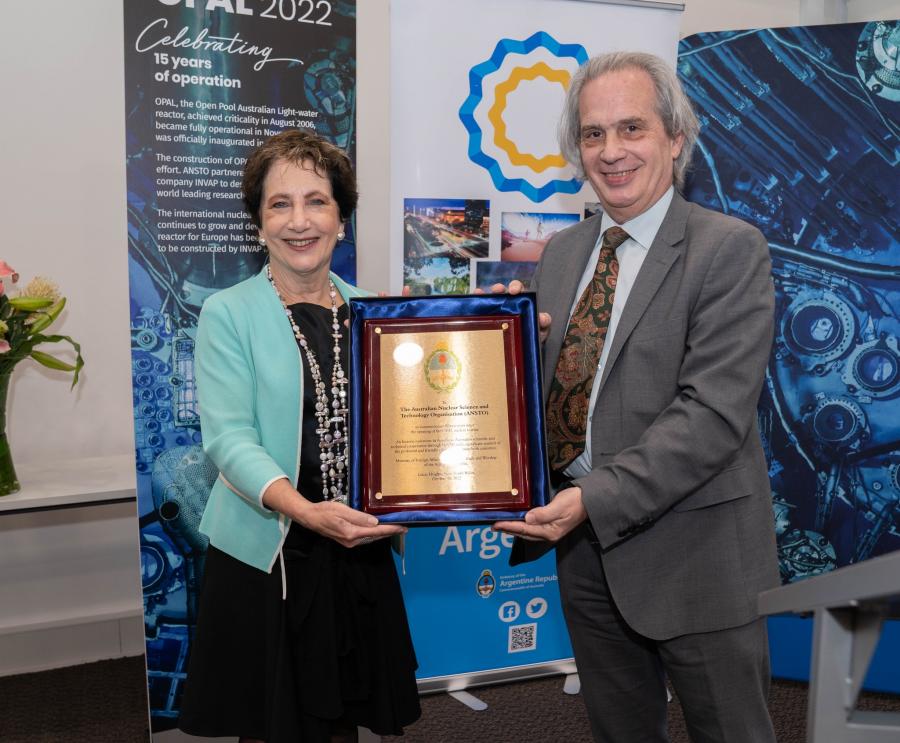

Published on the 20th October 2022 by ANSTO Staff
ANSTO and the Embassy of Argentina in Australia proudly hosted an event commemorating the 15th anniversary of the opening of the Open Pool Australian Lightwater (OPAL) multi-purpose nuclear reactor on 18 October.
ANSTO Board Chair, the Hon Dr Annabelle Bennett AC SC FAA FAL, CEO Shaun Jenkinson, ANSTO Board Members and Pamela Naidoo-Ameglio, Group Executive Nuclear Operations and Nuclear Medicine, welcomed Argentina’s Deputy Minister for Foreign Affairs, International Trade and Worship, Ambassador Pablo Tettamanti and other guests.
Other special guests included Leandro Waisman, Chargé d’Affaires, Embassy of Argentina in Australia; Eduardo Acevedo Diaz, Director of Asia and Oceania, Ministry of Foreign Affairs, International Trade and Worship of Argentina; Silvina Aguirre, Consulate General of the Argentine Republic in Sydney; The Hon. Jenny Ware MP, Federal Member for Hughes; Dario Polski, First Secretary, Argentine Embassy in Australia; and colleagues from INVAP and the Department of Foreign Affairs and Trade (DFAT).
At the event, His Excellency Ambassador Tettamanti handed over a plaque to mark the 15 years of operation.
The reactor, constructed by the Argentine company INVAP and opened in 2007, represents a remarkable achievement of scientific and technical cooperation between Argentina and Australia.
In the early 2000’s INVAP was chosen as the prime contractor for the design, procurement, installation, and supervision of OPAL's commissioning and performance demonstration — highlighting the advanced level achieved by Argentine nuclear technology.
The project, which involved a large group of Argentine and international contractors, including the Argentine National Commission of Atomic Energy, Comisión Nacional de Energía Atómica (CNEA), took over four years to be completed.
The reactor achieved criticality at 11.25 pm on 12 August 2006, became fully operational in November of that year, and was officially inaugurated by then Prime Minister Howard in April 2007. Since then, the reactor has become one of the most reliable and advanced reactors of its kind worldwide —operating approximately 300 days out of the year.
OPAL complies with the most stringent health, safety, security, environmental, and quality assurance standards for nuclear reactors.
Today, harnessing almost 70 years of Australian nuclear innovation, OPAL continues to be one of the top multi-purpose reactors in the world, providing approximately 80% of the national supplyof radioisotopes for nuclear medicine.
OPAL irradiates much of the world’s silicon to improve its electrical properties, which is used for high-end electronics. The reactor also supports research with applications for health, industry, and the environment. Members of the scientific, medical, environmental, and industrial communities have access to instruments which use neutrons from OPAL.


